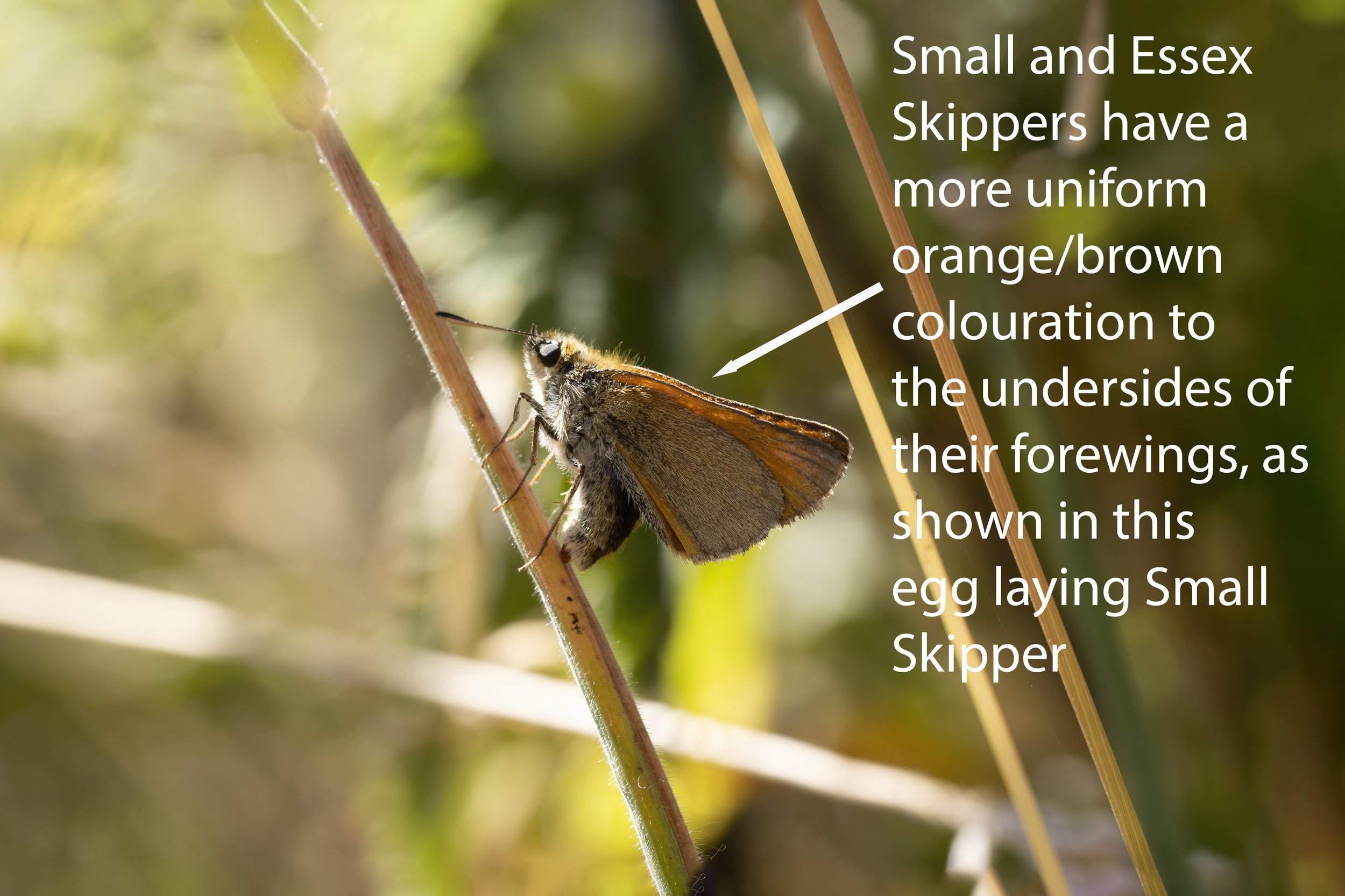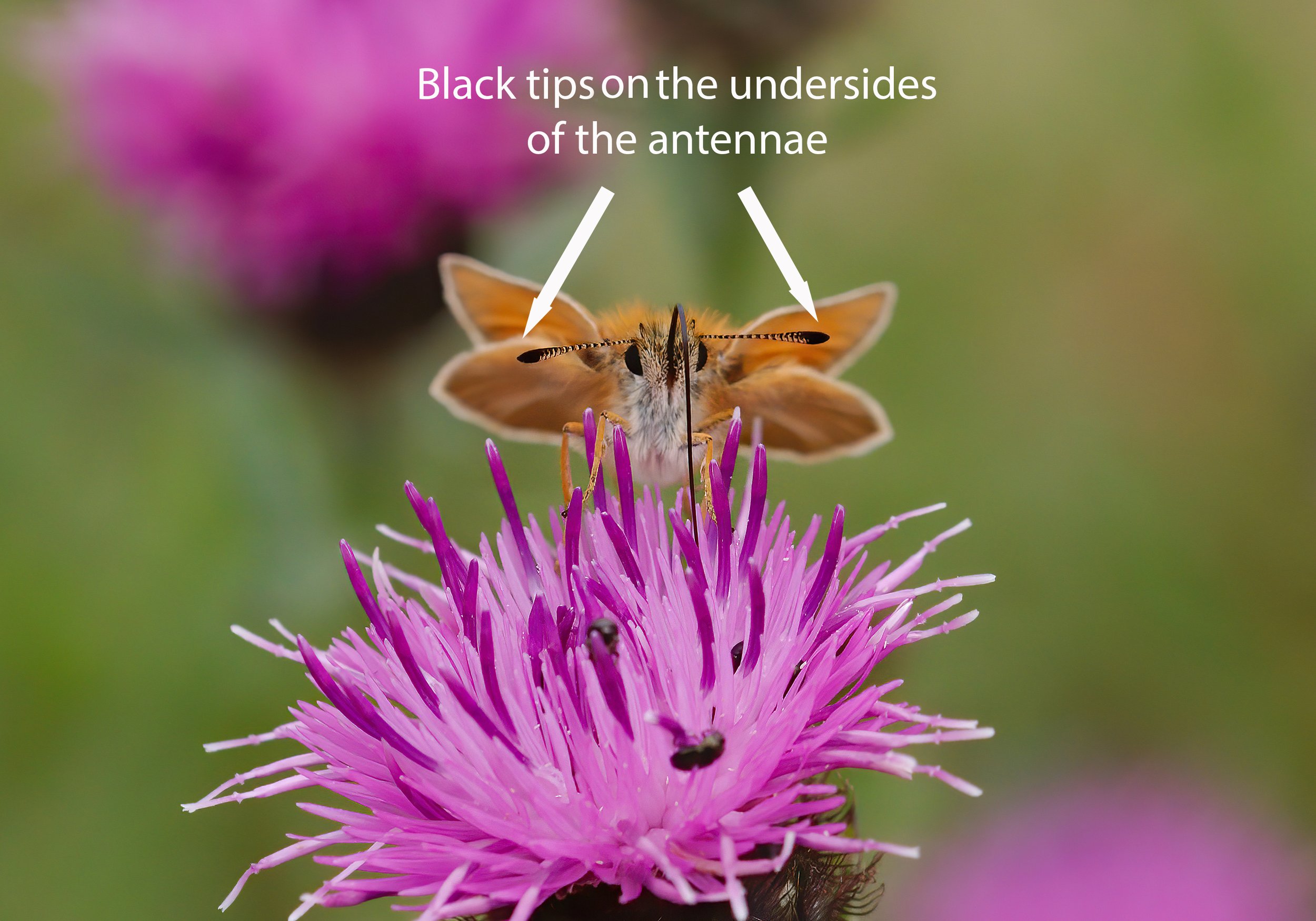Identifying Confusion Species - The Skippers
The identification of the common golden Skippers can prove quite a challenge in the field, but by knowing the key features they can, as long as you can get a good view, be separated quite easily. Hot weather can make confident identification very difficult, especially in the cases of the Small and Essex Skippers. Close-focusing binoculars are also very helpful in the field as you can get better views without disturbing the butterfly. Photography can certainly help too when it comes to identifying these butterflies as you have the benefit of zooming in on the image and of course, you can also send it to someone for a second opinion.
One of the most important lessons you will learn when starting out is that you cannot go by size. Yes, Large Skippers do tend to be larger than the Small and Essex Skippers but in the past I have seen some very small Large Skippers!
The Large Skipper is the easiest, and often the fastest, to identify in the field so it is always best to see if the unidentified Skipper you have seen is a Large Skipper first. Large Skippers are a rather deep orange colour. However, what separates them from Small and Essex Skippers is the mixture of light and dark markings on the wings. The Large Skipper also has hooked antennae but this isn’t always easy to see in the field.
Large Skipper
These light and dark chequered markings also show on the underwings too.
Large Skipper
Even at a distance, especially if the sun is behind the butterfly the wing patterns can be quite obvious such as in the photo below.
Large Skipper
If you have ruled out your Skipper being a Large Skipper then, in Northamptonshire at least, you know it must either be a Small or an Essex Skipper. Both Small and Essex Skippers have a more uniform orange/brown colouration on the wings and lack the lighter markings of the Large Skipper. They lack the hooks on the ends of the antennae too.
Small or Essex Skipper
However, while the above photos show these butterflies to be something other than a Large Skipper they don’t show the key features needed to differentiate between Small and Essex Skippers. For that, we need to be able to see the undersides of the tips of the antennae. In all honesty, this is something that is easier said than done, but with a little perseverance it can be achieved. It should also be mentioned that separating Small and Essex Skippers is much easier when the weather isn’t too hot or sunny, and it is definitely worth keeping an eye on any nectar sources as they will often sit for longer when feeding. This is where a pair of close-focusing binoculars can come in very handy!
In the Small Skipper, the undersides of the antennae are an orange/brown colour.
Small Skipper
Small Skipper
However, in the Essex Skipper, the undersides of the antennae have distinctive black tips.
Essex Skipper
Looking at the undersides of the antennae is the most reliable way to identify Small and Essex Skippers. So as a quick recap -
Small Skippers = orange/brown tips on the underside of the antennae
Essex Skippers = black tips on the underside of the antennae
There is another way of telling Small and Essex Skippers apart, but this only works with the males. The male butterflies of both species have a scent brand on the forewing and this is in the form of a thin black line. In the Small Skipper the scent brand line is long, slightly curved and at an angle to the outer edge of the forewing.
Small Skipper
The scent brand of the Essex Skipper is short, straight, and parallel to the outer edge of the forewing.
Essex Skipper
Hopefully the above will go some way in helping you to identify the golden Skippers in the field. Good luck!









